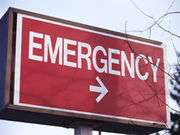(HealthDay)—Hypertension-related emergency department visits are relatively common and increased from 2006 to 2012, according to a study published in the Dec. 1 issue of The American Journal of Cardiology.
Candace D. McNaughton M.D., M.P.H., from the Vanderbilt University Medical Center in Nashville, Tenn., and colleagues examined the burden of hypertension-related emergency department visits, as well as the associated patient and hospital characteristics. Hypertension-related emergency department visits were identified using the Nationwide Emergency Department Sample from 2006 to 2012; population-based rates for each study year were determined by linking to U.S. Census Bureau July population estimates.
The researchers found that during the seven-year study period there were 165,946,807 hypertension-related emergency department visits (23.6 percent of all adult visits); hypertension was the primary diagnosis for 0.9 percent of all adult emergency department visits. Per year there was a 5.2 percent increase in the estimated yearly incidence rate for hypertension-related visits (P < 0.001) and a 4.4 percent increase per year for visits with a primary diagnosis of hypertension (P < 0.001). The proportion of adults hospitalized decreased over the same time period, and the proportion of visits at safety net hospitals and among uninsured patients increased.
"These data indicate that hypertension-related emergency department visits are common and increasing," the authors write.
More information:
Abstract
Full Text (subscription or payment may be required)
Journal information: American Journal of Cardiology
Copyright © 2015 HealthDay. All rights reserved.























